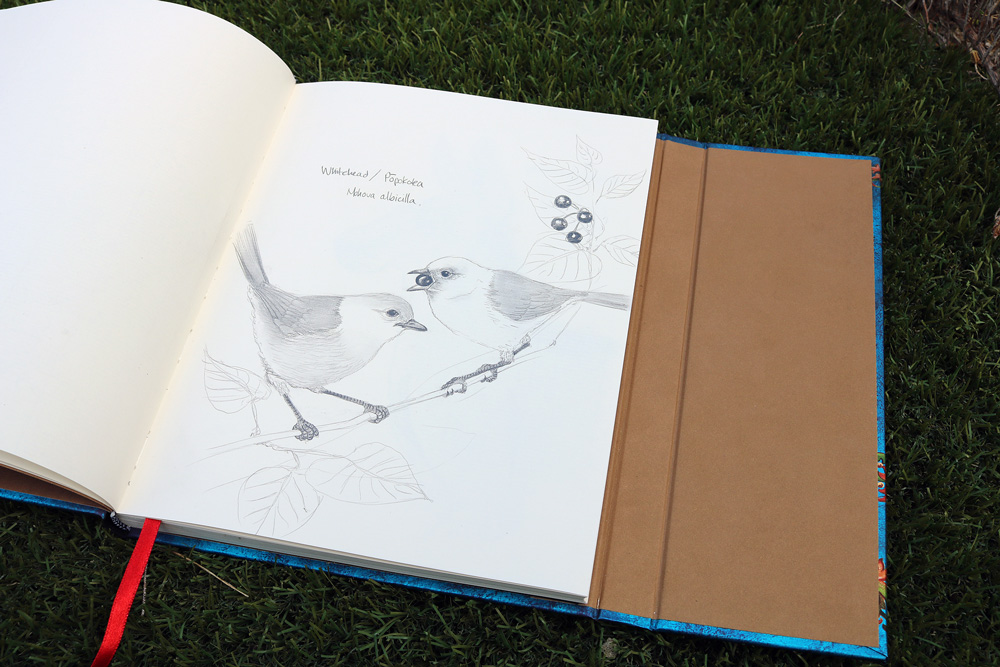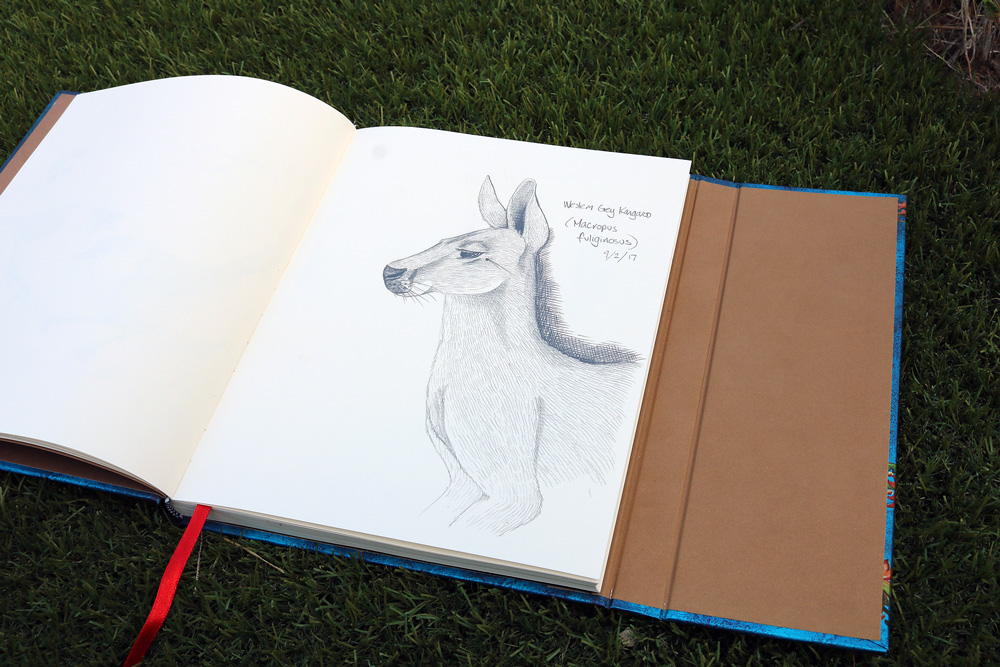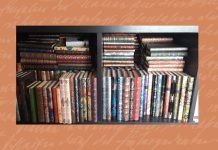For our “X Questions With” series, we’re speaking with talented individuals from around the world who have inspired us with their creativity and passion. If you have a story to tell or someone you’d like to see profiled, let us know in the comments or on Facebook, Instagram or Twitter!
Today, we’re catching up with Pia Ravenari, an artist and writer whom we first met five years ago. Between creating cover art for a favourite author and maintaining a fierce Inktober pace, Pia has definitely kept busy over the past few years. One thing that hasn’t changed, though, is her passion for illustrating the animal world!
1) Please tell us a little about yourself (any info you’d like to provide)
Name: Pia Ravenari
Age: 35
City: Ellenbrook, in Western Australia. Right on the fringe of farmland and winery country (It’s a shame I don’t drink wine!).
Education: Media Studies, Mass Communication, Scriptwriting, Creative Writing
Occupation: Artist and Writer
Places Travelled: I spent 30 years not having done more than go to Melbourne in the Eastern states. But then I went on a wonderful trip to England and Singapore, and am now planning to hopefully go to Orkney, Scotland and Italy in 2018.
Passions: Reading (so much reading!) – Especially fantasy, science fiction, LGBTQIA romance, non-fiction and poetry. I love artists like Franz Marc, Marc Civitarese and old-school natural history artists like those who discovered so much flora and fauna. I write (pretty much all of the genres I read, heh). Adore David Attenborough. I’m passionate about nature and wildlife, xeriscaping with native plants in desert climates, feminism and I love the media in so many forms. It’s hard to know where to begin there, but I also am passionate about media theory and media politics too. I support local non-profits, like the Indigenous Literacy Foundation. I’m also spiritual, and a member of OBOD – the Order of Bards, Ovates and Druids.
Creative Works: Aside from my DeviantArt/Folio/Etsy and selling originals, I’ve done a (Ditmar-nominated) cover for Juliet Marillier’s Prickle Moon anthology, a cover for Hex Magazine, had internal illustrations in the 2016 World Fantasy Award–winning She Walks in Shadows Lovecraft anthology and the crowdfunded Losing Altitude art-book on endangered birds.
2) We first talked to you five years ago, when you were pursuing your Masters in Communication and balancing being a student and an artist. How has life changed since then?
My life has changed a lot since then. I ended up needing to stop the Masters because of chronic health issues; among other things I was diagnosed with Fibromyalgia and an incurable genetic disorder called the SDHD gene fault which affects something like one in twenty million people.
I took a break from everything for a while to rediscover my perspectives, and also to learn a new way of living my life. I have always liked to go in, guns blazing, and work really hard. I paralleled it to being like a phoenix – I’d burn up, then burn out, in this constant cycle. I still do it, but I’m trying to make sure I don’t burn out for as long.
These days, I’m working as an artist again but at a more relaxed pace, which gives me the opportunity to work on amazing projects, like the cover for Juliet Marillier, or internal illustrations for books and magazines. I write in the background, and I’m hoping to release an LGBTQIA romance novel later in the year.
3) Are you still keeping journals? And if so, what does your typical journal get filled with these days?
I still keep journals, and I use them for such a mix of things. I tend to like dedicating different journals to different things. I’m using a Florentine Cascade Delphine that’s unlined for 2017 sketches. I also like to use Paperblanks for ballpoint pen sketches, like “A Corvid’s Growth” which was also done in the Delphine about a month ago (it has since been cut out for a client). I have individual Paperblanks for poetry, worldbuilding and writing development (nothing breaks writer’s block better than setting pen to paper and letting the words flow), language studies, my OBOD/spirituality studies (and tarot reading results), and then yes for general journaling too. It’s how I justify having so many journals in my ever-expanding collection!
4) You mentioned that you recently had the opportunity to create traditional cover art for a Juliet Marillier anthology. How did this collaboration come about?
Initially, I got an email in my inbox from Juliet, and thought I was being pranked. I had always been a fan of Juliet Marillier. Being big into fantasy reading as a teenager, she was such a seminal part of the books that built my love for the genre. I was aware she lived in Western Australia, but beyond that, never thought we’d ever encounter each other. I got an email where she expressed interest in having my art for her cover, and that the publisher – Ticonderoga – had approved her choice.
It was lovely to visit and collaborate together, and hear her ideas, read the stories, and be able to give her different options to approve and so on; the original is now in her home. Cover art doesn’t often work like this these days, and traditional cover art is becoming increasingly rare since it’s not really cost effective for most publishers compared to digital, so it was a really amazing, humbling opportunity.
5) You’re also doing some writing yourself these days. Do you feel like you are a writer or an artist first – or do the two go hand-in-hand?
It’s definitely changed. For some years I was an artist first and more a hobby writer. Then for a few years I was a writer first and art was left by the wayside. I have realised I’m happiest trying to integrate both into my life. I feel like both inform each other, while being different enough that they don’t pull from the same part of my mind and tire me out in the same way. Art fatigue feels different from writing fatigue, so sometimes if I have art fatigue, I can still write and vice versa. I’m discovering that while the dual path is harder to balance, it’s also far more enriching.
6) Animal themes, especially the spiritual element of animal totems, are prevalent in your illustrations. Does this carry over to your writing as well?
There are definitely common themes I always refer to. My love of nature is present in both, and I usually have animal characters around. I wrote the short story Street Dancer as Pia Van Ravestein, and many people said their favourite character was the mechanical cat, even though he was a side character. When I write fantasy, I’m usually writing worlds that are based off nature traditions, and there’s usually fae and fantastic creatures and magical laws and so on, and I tap into those energies in my art, and also my reality. Whether or not people believe in them, I feel like my life is better for embracing it.
7) What other themes or styles do you find yourself gravitating to?
In writing and art, I’m drawn to representing a lot of LGBTQIA characters, across the spectrum. I tend to explore trauma narratives and trauma recovery a great deal, both in art and writing. In art, this comes across most in my Wandsuna series – which is sort of a combination of dream imagery, ominous figures and stories in costume, and the Dissociation series – which explored my own relationship to dissociated aspects of my personality. In writing, my characters have usually been through something difficult and have either Post-Traumatic Stress Disorder, or some post-trauma that usually causes conflict and is also resolved in the course of writing.
In both art and writing I find myself constantly representing Australia in varying ways. I’ve set romance books in Australia, and I am drawn to local flora and fauna. Lately, I find myself drawn more to fairytales and Celtic imagery – such as knotwork. I’ve been gently exploring this. I’ve also been combining Celtic symbolism and imagery with Australian animals, as with my Dawn Bilby illustration from last year.
8) Have you received any formal training in the arts?
Some minimal training – there was highschool, where I took both art streams, and then a semester at university, at the Western Australian Academy of Performing Arts (WAAPA) back when they still offered a Fine Arts degree. It was fun and incredible, but health issues struck back then and I shifted over to media because I thought art wasn’t ‘serious enough’ and I was surrounded by people who kept telling me that art wasn’t a career and wasn’t good enough. I actually started illustrating animal totems as doodles in my journals while doing the media degree, because I wanted to feel connected to nature while I was stressed about assignments. Selling art was kind of a happy accident; I had no idea people wanted what I was doing, until they started telling me they did. I acquire art books and look at art tutorials all the time, and I’m constantly pushing to learn new mediums – lately it’s been dip pens with Tachikawa nibs, and watercolours!
9) Any advice you would like to share with aspiring artists?
Everyone’s path is so unique, so take whatever I say with a grain of salt. But I do think that… people like to sometimes give you the impression that you can’t be a professional artist, or that it’s too hard, especially when you’re younger. The reality is this – a lot of people are artists because they just decided to be, and kept going. There’s no real trick to it, except the hours sunk into the practice of it, and learning how to love the mistakes you make, because you’ll need to make them in order to improve. You don’t even have to be the best. Most people who make it, make it because they kept going. The arts are a marathon, not a sprint.
Make friends in the art (or creative) world, and stick with the people who support their fellow artists. I know so many awesome writers and artists now, and I think some creators tend to ‘get’ fellow creators, and also randomly – I am now in a writer’s group with Juliet Marillier and other writers I respect and admire. Small world, Perth. There is a world of lovely, wonderful creative people who want to support you, love you, and will have your back. That is invaluable during those times when you need to back down and recharge (I find a lot of artists and writers understand that process), and they’ll celebrate your wins with you, as well. Much of the arts can be a lonely career, but there’s community out there if you look for it and help build it.
10) Are you working on any new projects you would like to share with us?
I have a light schedule this year due to health matters that have just cropped up and forced me to rethink this entire year, and writing is one of those things where it’s hard for me to share the project until it’s finished. However, at the moment I’m slowly working my way through colouring the illustrations I did for Inktober 2016, at which point they get listed on Etsy. I’ve been really enjoying Inktober – which is to ink a piece every day throughout October – and last year I worked on really ‘complete’ pieces instead of ink sketches. It gives me thirty pieces to continue working on, and I love being able to take my time with colouring.
For More from Pia…
DeviantArt: http://ravenari.deviantart.com/
Instagram: https://www.instagram.com/ravenari/
Etsy: https://www.etsy.com/au/shop/ravensdreaming
Twitter: https://twitter.com/Ravenari
Tumblr: http://ravenarisart.tumblr.com/
Portfolio: http://ravenari.artworkfolio.com/
Facebook: https://www.facebook.com/Ravenaris-Art/
About Paperblanks: At Paperblanks, we believe that art should have a place in all aspects of life. That’s why we follow the artist’s way in everything we do – creating, crafting and releasing designs we believe have the power to touch people. For more about Paperblanks, go to our website at paperblanks.com.









